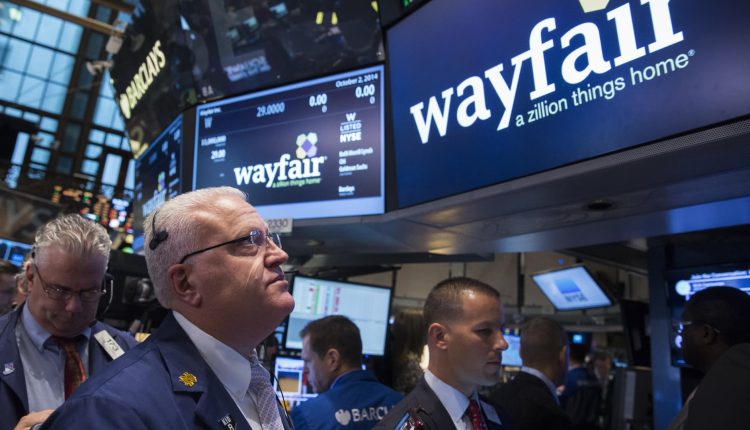Wayfair is cutting 13% of its global workforce as the digital home goods retailer continues its efforts to trim down its structure, cut out layers of management and reduce costs after going “overboard” with corporate hiring during the Covid pandemic, it announced Friday.
The company plans to lay off around 1,650 employees, including 19% of its corporate team, with a focus on people in management and leadership positions, Wayfair said.
The restructuring – the third Wayfair has implemented since summer 2022 – is expected to save the company about $280 million, it said.
Shares of Wayfair surged 10% on Friday after the news was announced.
“The changes announced today reflect a return to our core principles on resource allocation,” Wayfair’s co-founder and CEO, Niraj Shah, said in a statement. “Although persistent category weakness makes revenue growth challenging, we remain encouraged by the share gains we continue to see.”
The layoffs come after Hasbro, Etsy and Macy’s all announced cuts to their workforces as retailers contend with slowing demand and an uncertain economy. At the height of the holiday shopping season in mid-December, Hasbro and Etsy announced staff reductions of 1,100 and 225 workers, respectively, and on Thursday, Macy’s said it plans to cut more than 2,300 employees, or 3.5% of its workforce. The department store retailer also has plans to close five stores.
Wayfair said the cuts were not related to fourth-quarter performance but were rather a proactive move to get the company back to its core structure.
During the pandemic, Wayfair saw its business explode as stuck-at-home consumers used stimulus dollars and savings to splurge on home goods like furniture and decor. It saw annualized sales go from $9 billion to $18 billion “almost overnight” and needed to boost its headcount to meet the demand, Shah said in a memo to employees Friday.
However, as the virus’ impact began to wane, the home goods sector overall started to see a pullback in demand. As a result, Wayfair has needed to make cuts to ensure its staffing levels are proportionate to how much business it’s doing.
“By mid 2022 it was clear we were in a bust period. It was also clear that we had gone overboard with corporate hiring during Covid,” Shah said. “As everyone here knows, we’ve had two significant corporate restructurings since 2022 to try to right-size this. Each time we used our best judgment, identified the cost target we needed to hit, and believed we were resizing to the right point.
“After each reduction we have gotten more of our goals done faster. I believe we need to stay focused as a company on what committed small teams can accomplish. In many ways, having too many great people is worse than having too few,” he said. “With too few, you get a lot done quickly, but you may not get everything done that you want. But having too many causes inefficiency, coordination costs, and investments in lower return activities. That is what we have been experiencing and what we need to end.”
In the latest reductions, the company sought to eliminate senior people in certain areas who had “too much time” and spent that time meeting with other senior leaders instead of actually executing, it said.
Wayfair also wants to rightsize the ratio of engineers to engineer partners, such as those in business, product, design, research and analytics roles, because an excess of those positions doesn’t “create better technology outcomes and rather will do the opposite,” Shah said.
“We are gaining forward momentum due to everyone’s dedicated efforts. Our toughest stretch is now behind us. And I think our best year is right in front of us,” Shah said.
The company does plan to rebuild portions of its headcount throughout the year but will focus on lower-ranking jobs and positions that execute on actions, rather than leadership roles that oversee those actions, the company said.
If revenue remains flat this year for Wayfair, the company expects it will bring in $600 million of adjusted earnings before interest, taxes, depreciation and amortization in 2024, up from a previous expectation of $450 million.
Don’t miss these stories from CNBC PRO:
Read the full article here

